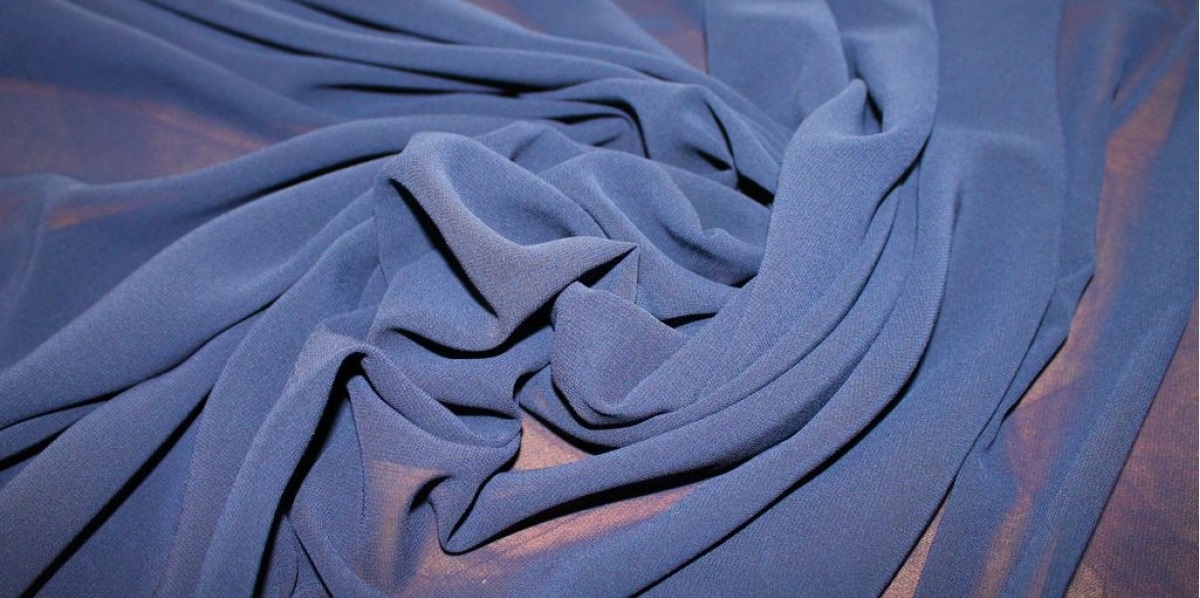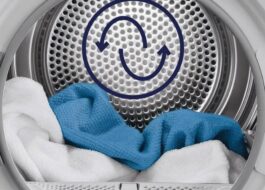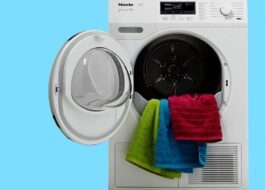What items can be dried in the dryer?
 Contrary to popular belief, tumble dryers do not completely replace natural drying. Therefore, there is no need to put everything that comes to hand in them, otherwise some wardrobe items may be irrevocably damaged. Let's study this issue more carefully and determine what can be dried in a dryer and what is better to dry naturally.
Contrary to popular belief, tumble dryers do not completely replace natural drying. Therefore, there is no need to put everything that comes to hand in them, otherwise some wardrobe items may be irrevocably damaged. Let's study this issue more carefully and determine what can be dried in a dryer and what is better to dry naturally.
Linens that can be put in the dryer
The first thing that definitely can and even needs to be dried in a machine is cotton. This category also includes synthetic, semi-synthetic and other mixed fabrics. Once processed in the dryer, they become very soft to the touch. In addition, the drying mechanism is designed in such a way that after this the clothes are smoothed out and do not need further processing with an iron. Everyday items, bed linen, terry robes, towels, rugs and bedspreads, etc. are ideally resistant to automatic drying.
Important! If your wardrobe consists entirely of jeans, cotton tanks and T-shirts, you can say that you can literally dry everything in the dryer.
Some drying units are equipped with additional devices for washing non-standard items. For example, a metal basket where you can place washed soft toys, textile bags and even certain types of shoes.
Fabrics that will suffer in the dryer
So, let's take a closer look at how a dryer works. You place wet items in the drum and start the drying program. After starting, the drum begins to rotate, simultaneously filling with hot air. As a result, the moisture gradually evaporates.
The moisture removal mechanism depends on the type of dryer. There are models where moist exhaust air goes into the ventilation hole through a special hose. Other machines have a condensation method. This means that the water and air are separated and the dry air continues to work inside the drum. When drying is finished, you just need to take the dry laundry out of the basket, pour the liquid out of the container and rinse the filter.
For most items, a tumble dryer is truly an excellent alternative to conventional drying. After all, now it’s enough to spend a minute loading the drum and starting it instead of hanging clothes for a long time on the balcony, on clotheslines in the bathroom or on a folding dryer. But let’s return to the main question of the article: are all products able to safely endure such an intense drying process? Obviously not.
For example, in washing machines we cannot wash some items of clothing due to the high temperature of the water, which has a detrimental effect on the fabric. It's the same here. Do not forget that things are dried through active mechanical action and hot air treatment. This procedure is contraindicated:
- tulle;
- cambric;
- chiffon;
- nylon.
- elastic fabrics that can be significantly deformed during the drying process.
Attention! Under no circumstances should you automatically dry clothes with an abundance of decorative elements (embroidered with rhinestones, beads, sparkles, metallic inclusions or appliques); printed pictures fall apart and come off due to hot air, sparkles come off and cling to other objects.
Thus, many items of women's wardrobe, due to the abundance of decor and drying in the machine, can become completely unsuitable for further use.
Woolen items should also not be dried in the dryer. From intense exposure, they can fall off and shrink to microscopic sizes. Other hand- or machine-knitted items stretch and become completely deformed when automatically dried. Special attention should be paid to outerwear, where fasteners, clasps, buttons, snaps, etc. abound.
Also, modern models of drying machines still do a poor job of drying multi-layer items (for example, pillows, blankets, down jackets, etc.), especially if they are very large. It is strictly forbidden to dry clothes that have oil stains on them or that have recently been treated with some kind of chemical solutions: with strong heating, this area of the fabric may ignite. Foam materials also do not tolerate high temperatures.
How to minimize damage from machine drying?
At first glance, it seems that practically nothing can be dried in a dryer. And a reasonable question arises: what is the point of this technique if it is largely useless? In fact, everything is not so simple. Over the years of their existence, dryers have improved quite well, and now they can operate in different modes, ranging from light blowing to extreme drying parameters. In the range of programs of most models, it will not be difficult to find the right one.
Before loading items of clothing into the dryer, carefully read its technical specifications, and then strictly follow the operating instructions. Labels on clothing can also help.Typically, the manufacturer of the product clearly indicates the conditions for washing, drying and ironing a particular item. Most users pay attention only to the recommendations for washing the product. However, at the moment we are interested in the drying icon. It looks like a square with a circle inscribed in it (schematically reminiscent of a dryer).
- If this sign is crossed out, drying the product is automatically prohibited.
- If there is one black dot in the center of the circle, then drying at low temperatures is acceptable.
- Two dots in the center of the circle - drying at moderate temperatures is acceptable.
- Three dots in the center of the circle - high temperature is allowed.
- If an additional line is visible at the bottom of the picture, this indicates the need for a gentle regime.
- Two lines at the bottom - gentle spinning and drying mode.
And of course, you should never forget about the basic rules for using a dryer. Problems caused by improper use of the unit can cause no less damage to your things than, for example, choosing the wrong mode.
Before putting clothes into the dryer basket, you need to turn them inside out, fasten all the buttons, zippers, tie belts, and turn out pockets.
If suddenly a small metal object gets into the drum along with clothes, it can cause colossal damage not only to the products, but also to the automatic dryer itself, which will lead to costly and time-consuming repairs. Be careful!
Interesting:
Reader comments
- Share your opinion - leave a comment
Categories
Washing machine repair


For buyers

For users

Dishwasher

















Add a comment